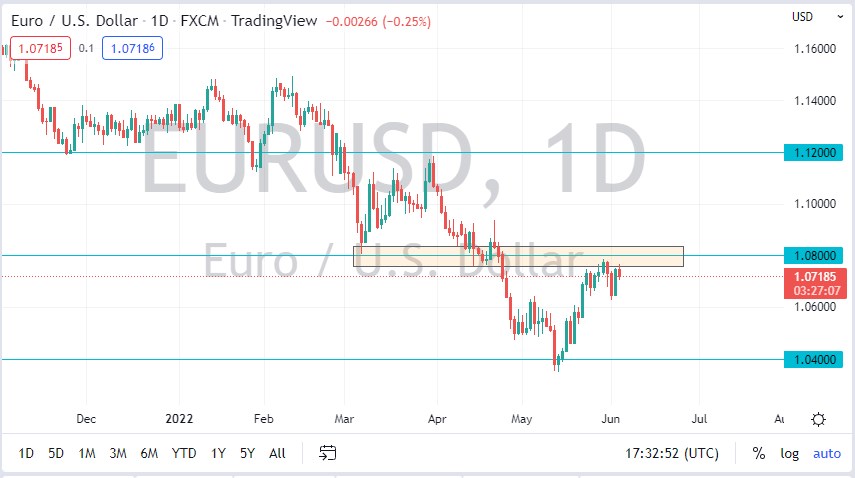[ad_1]
Expect a lot of noise, but expect more negative pressure than positive going forward.
The euro initially tried to rally on Friday but gave back gains after the jobs number came out. At this point, we started to see interest rates rise slightly in the United States, which made people run towards the US dollar again. The 1.08 level above is an area that has been important multiple times, and now it looks like the sellers are willing to stand in front of it and start shorting again. Ultimately, the market is likely to continue the overall downturn, and I think it’s likely that we could go down to the 1.04 level.
The market extends resistance to the 1.09 level, so if we were to break above there, the market is likely to go looking to the 1.12 level. Ultimately, it’s not until we break above the 1.09 level that I would be looking to buy this market. This is a market that will continue to be noisy, but that’s nothing new for the EUR/USD pair.
If we were to break down below the 1.04 level, then it’s likely that the euro could go looking to the 1.02 level, possibly even the parity level. I don’t think that happens in the short term, but over the longer term, it’s very possible that will happen, especially if we start to see some type of global recession. At this point, I don’t necessarily think that the euro is going to rally for the longer-term move, but traders are starting to look at the possibility of the ECB having to raise interest rates. I think they may do so, but it’s going to be nowhere near as aggressive as the Federal Reserve.
The balance that we have seen is the garden-variety correction to a huge trend. While it has made four handles to the upside, it’s still not that impressive when you look at the trend over the last several years. If the world is going into a recession, there will be another reason for people to start buying bonds, especially as the US bond market offers more in the way of return on yield than most others, including Germany and the rest of the European Union. Expect a lot of noise, but expect more negative pressure than positive going forward. Look to the short-term charts for signs of exhaustion.

[ad_2]
